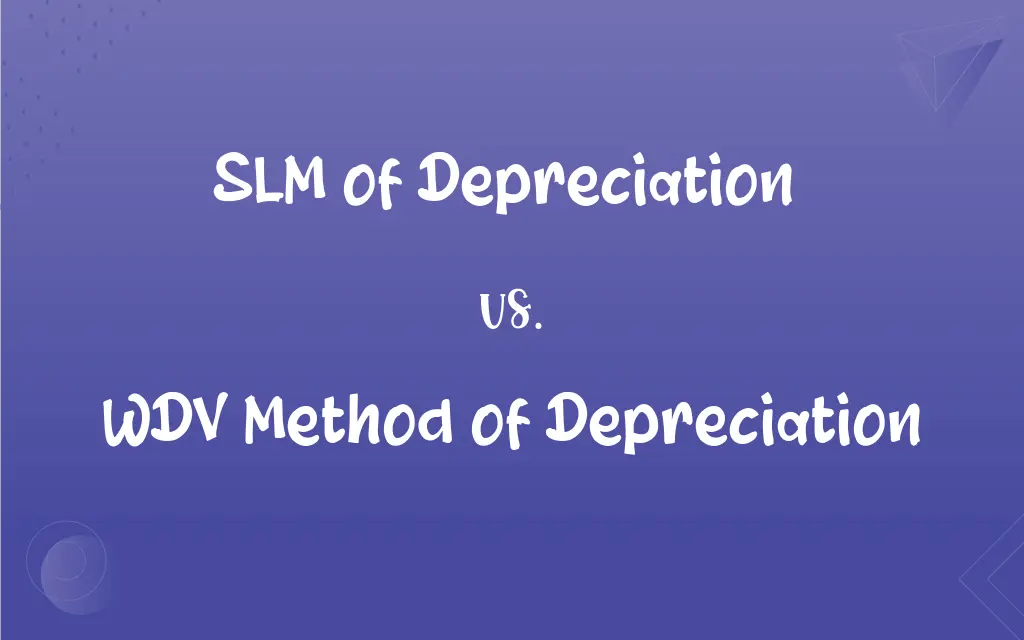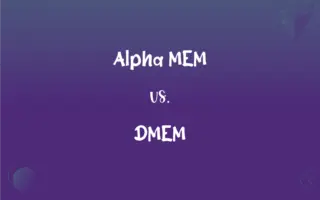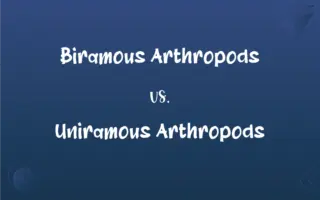SLM of Depreciation vs. WDV Method of Depreciation: What's the Difference?
Edited by Aimie Carlson || By Harlon Moss || Published on February 1, 2024
SLM (Straight Line Method) depreciates assets uniformly over their life, while WDV (Written Down Value) method uses declining balance to depreciate more in early years.

Key Differences
The Straight Line Method (SLM) of Depreciation involves depreciating an asset evenly throughout its useful life. In contrast, the Written Down Value (WDV) method, also known as the declining balance method, depreciates the asset more in the initial years with the depreciation amount reducing over time. This fundamental difference reflects SLM's consistency versus WDV's focus on an asset's early years.
With SLM, the depreciation expense is the same each year, calculated as the asset's cost minus its salvage value divided by the useful life. The WDV method, however, calculates depreciation based on the asset's remaining book value each year, applying a constant rate, resulting in a decreasing annual depreciation expense. The uniformity of SLM contrasts with the reducing pattern of WDV.
SLM is simpler to calculate and apply, making it ideal for assets with consistent utility over their lifespan. WDV is more complex but suits assets that have higher utility and value in the initial years, with a rapid decrease in efficiency or value over time. These differences in application suitability highlight the distinct approaches of each method.
The impact on financial statements varies: SLM offers a steady expense pattern, aiding in consistent profit reporting. WDV results in higher expenses initially, reducing taxable income more in the early years but less in later years. This discrepancy shows SLM's effect on steadier financial performance versus WDV's front-loaded depreciation impact.
SLM is widely used due to its simplicity and predictability. WDV, on the other hand, is preferred for tax purposes in certain jurisdictions because it reduces taxable income significantly in the early years of an asset's life. This usage pattern reflects SLM’s general applicability and WDV’s strategic tax advantages.
ADVERTISEMENT
Comparison Chart
Depreciation Pattern
Uniform annual depreciation.
Higher depreciation in early years, decreasing over time.
Calculation Method
Cost minus salvage value divided by useful life.
Based on remaining book value with a constant rate.
Complexity
Simple and straightforward.
More complex due to changing annual amounts.
Financial Impact
Consistent expense, steady profit reporting.
Higher initial expenses, reducing taxable income early on.
Typical Use Case
Ideal for assets with consistent utility over time.
Suited for assets with more utility/value in early years.
ADVERTISEMENT
SLM of Depreciation and WDV Method of Depreciation Definitions
SLM of Depreciation
SLM results in a constant annual depreciation charge.
The vehicle will incur a consistent $1,500 depreciation each year with SLM.
WDV Method of Depreciation
WDV applies a constant rate to the asset's diminishing book value.
Using WDV, the computer's depreciation decreased each year.
SLM of Depreciation
SLM depreciates assets evenly over their useful life.
The company used SLM to depreciate its office furniture over 10 years.
WDV Method of Depreciation
WDV is suitable for assets that lose value rapidly early on.
WDV is ideal for our high-tech equipment due to its quick value drop.
SLM of Depreciation
SLM is popular for its simplicity and uniform expense pattern.
We prefer SLM for its predictability in financial planning.
WDV Method of Depreciation
WDV is more complex, reflecting an asset’s changing value.
Calculating depreciation with WDV requires more attention due to its varying annual amounts.
SLM of Depreciation
SLM spreads the cost of an asset uniformly across its lifespan.
Using SLM, the annual depreciation for the machinery is $2,000.
WDV Method of Depreciation
WDV depreciates assets more in early years, lessening over time.
The WDV method resulted in a higher depreciation expense in the first year.
SLM of Depreciation
SLM is a straightforward approach to asset depreciation.
SLM makes it easy to calculate the fixed annual depreciation expense.
WDV Method of Depreciation
WDV impacts financials with higher early expenses, aiding in tax reduction.
The WDV method helped lower our taxable income significantly in the initial years.
FAQs
What does SLM stand for in depreciation?
SLM stands for Straight Line Method in depreciation.
How is depreciation calculated in SLM?
In SLM, depreciation is calculated as (Cost of Asset - Salvage Value) / Useful Life.
What is the WDV method in depreciation?
WDV, or Written Down Value, is a depreciation method that involves higher depreciation charges in the earlier years of an asset's life.
Is SLM suitable for all types of assets?
SLM is suitable for assets with a consistent rate of utility over their lifespan.
Can SLM result in variable depreciation charges?
No, SLM results in a fixed depreciation charge each year.
Does WDV always reduce tax liability more than SLM?
WDV can reduce tax liability more in the early years compared to SLM, but this can vary depending on the asset and tax laws.
How does SLM affect financial statements?
SLM results in consistent depreciation expenses each year, leading to stable financial reporting.
Why is WDV preferred for certain assets?
WDV is preferred for assets that lose value more quickly in the initial years.
Can SLM and WDV be used simultaneously for different assets?
Yes, a business can use SLM for some assets and WDV for others, depending on their nature and utility.
How does the WDV method calculate depreciation?
WDV calculates depreciation on the book value of the asset at the beginning of each year using a fixed rate.
Are both SLM and WDV accepted for tax purposes?
Yes, both methods are generally accepted, but it depends on the specific tax regulations of a jurisdiction.
Which method is easier to calculate and manage?
SLM is generally easier to calculate and manage due to its simplicity and uniformity.
Is the salvage value considered in the WDV method?
The salvage value is less impactful in the WDV method as it focuses on the book value at the beginning of each year.
Does the choice of depreciation method affect asset resale value?
The depreciation method does not affect the actual resale value of an asset, though it affects the book value in financial records.
How does the choice of depreciation method impact budgeting?
SLM offers predictable budgeting due to consistent charges, while WDV may require more dynamic budgeting due to its decreasing charges over time.
Does SLM or WDV affect an asset's maintenance costs?
Neither SLM nor WDV directly affects the maintenance costs of an asset, which are determined by the asset's actual use and condition.
Why might a company choose WDV over SLM?
A company might choose WDV over SLM for assets that lose efficiency or become obsolete quickly, to match expenses with the asset’s usage.
Is one method better than the other for all businesses?
No single method is universally better; the choice depends on the nature of the assets, business strategy, and financial goals.
Can depreciation methods be changed once chosen?
Changing depreciation methods is generally not encouraged and may require justification and recalculations, subject to accounting standards and tax regulations.
How does the WDV method impact early-year profits?
WDV lowers profits more in the early years due to higher depreciation expenses.
About Author
Written by
Harlon MossHarlon is a seasoned quality moderator and accomplished content writer for Difference Wiki. An alumnus of the prestigious University of California, he earned his degree in Computer Science. Leveraging his academic background, Harlon brings a meticulous and informed perspective to his work, ensuring content accuracy and excellence.
Edited by
Aimie CarlsonAimie Carlson, holding a master's degree in English literature, is a fervent English language enthusiast. She lends her writing talents to Difference Wiki, a prominent website that specializes in comparisons, offering readers insightful analyses that both captivate and inform.































































